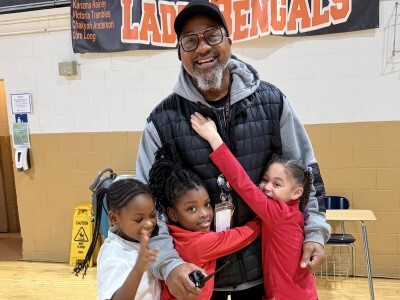A Distribution Challenge: Scaling Charter School Innovation and Impact to States and Districts
Topics

When educators design and create new schools, and live next gen learning themselves, they take the lead in growing next gen learning across the nation. Other educators don’t simply follow and adopt; next gen learning depends on personal and community agency—the will to own the change, fueled by the desire to learn from and with others. Networks and policy play important roles in enabling grassroots approaches to change.
Matchbook Learning looks to the "Microsoft model" to distribute and scale innovations in education.
This post originally appeared on MatchbookLearning.com on December 8, 2015.
In “Transitional Philanthropy: Leveraging Innovation to Build Sustainability” Jeffrey Walker makes the point that in the for-profit world, venture capitalists invest massive sums of money into ventures they hope will be able to rapidly grow and scale their business model, distribute their product or service to a mass audience and eventually replace the incumbent product or service.
In the not-for-profit world, however, there’s no real parallel. Scalability doesn’t happen in the world of education, for example, because even if someone has an innovative and successful method of providing it, there’s no mechanism for distributing it widely and rapidly.
The number of failing schools in this country is growing and unless we find scalable, replicable solutions that can be rolled out quickly to turn around large numbers of schools, it’s going to be very difficult to make the impact we all want.
In public education, many charter management organizations (“CMOs”) that are relatively small in size and duration are working on very innovative ideas and models for the future of learning. However, for the most part, they are trying to build their own distribution systems—a network of schools they run directly—to scale these innovations. That is always going to be limiting because no CMO will ever be able to run enough schools to make a dent in this massive national problem.
Also, because CMOs invest so much time, energy and money in building their own competing distribution networks, they rarely work closely with school districts—which, after all, control the largest number of schools. They don’t generally share capacity or create compelling models for student impact that could scale to the entire system in purposeful ways.
School districts view CMOs as competition. CMOs view districts as the model they’re trying to replace. Consequently, CMOs and the schools they manage represent less than 5% of the total market (available public school seats) after 15+ years as an industry segment. CMOs, if we’re honest, are failing (or have failed) to impact at scale because they rarely design experiences that partner with the “distribution networks” of states and school districts.
We should learn from the successful models and experience of private sector innovators. Three decades ago, Bill Gates designed an incredible operating system, but he eventually had to partner with several dominant hardware manufacturers to get his product to the masses. Going alone would have required a much, much longer time frame, more capital and a distribution system Microsoft didn’t have.
One of its competitors, Apple, became adept at creating its own operating system, tied to its own hardware and distribution network, but that’s a model that would be difficult for most of us to follow.
The question here for CMOs is whether we truly believe anyone of us can be the next “Apple” for our industry? Are we willing to build, invest and wait over the next decade as we build a national distribution network that we own? Or are we better off following the Microsoft model of taking our successful and innovative models and scaling them through the use of other “distribution” networks?
There now exists the opportunity for the “Microsoft model.” While cooperation and capacity sharing between districts and CMOs is not the norm, there are now an increasing number of states and districts that have created “Achievement Zones” or “Recovery Districts” (Louisiana, Tennessee, Michigan, Nevada, etc.), that are inviting CMOs to partner and collaborate with them. These configurations pair passionate non-profit partners with the ground level troops working in the state and district trenches. This mission driven reform is showing national promise. Still, are there enough CMOs and can they run enough schools directly to meet the demand?
Matchbook Learning is looking at the scale problem from the vantage point of aligned incentives for our non-profit organization and our core state and district partners. We believe we have a new “product” worthy of being tested. Our product: an innovative, futuristic model of teaching and learning anchored within our own technology platform, “Spark.”
The proving grounds are our three school sites in Newark and Detroit. The ultimate distribution system has to be district schools—networks of district schools interested in the future of learning, personalized learning for each and every student. We do not intend to build our own distribution system. We cannot compete with districts’ scale nor do we desire to.
We do however intend to design, build and launch a “Matchbook Learning Accelerator.” This Accelerator will bring together willing partners who will apprentice under our Matchbook Learning’s team to delve into our model and methodology and launch their version of the same one year later, customized to their geography and the demographics they serve. These partners and their schools can extend our innovative model through their own distribution systems.
A new growth formula emerges:
Innovation + Distribution = Scaling Impact
We will reveal more about this Matchbook Learning Accelerator in 2016.
Stay tuned.




